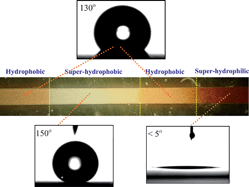We demonstrate a mass-production-amenable technology for fabrication, surface modification and multifunction integration in polymeric microfluidic devices, namely direct lithography on the polymeric substrate followed by polymer plasma etching, and selective plasma deposition. We apply the plasma processing technology to fabricate polymeric microfluidics in poly(methyl methacrylate) (PMMA) and poly(ether ether ketone) (PEEK). First, deep anisotropic O2 plasma etching is utilized to pattern the polymer via an in situ, highly etch-resistant, thin, Si-containing photoresist, or via a thick organic photoresist. Absolute control of surface roughness (from smooth to very rough), and the production of stable-in-time (slowly ageing) superhydrophilic microchannels are demonstrated. Second, we demonstrate the spontaneous capillary pumping through such rough, superhydrophilic plasma-etched microchannels in contrast to smooth ones, even 5 weeks after fabrication. Third, by using C4F8 fluorocarbon plasma deposition through a stencil mask, we produce superhydrophobic patches inside the microchannels, and use them as passive valves. Our approach proposes “smart” multifunctional microfluidics fabricated by a plasma technology toolbox.

You have access to this article
 Please wait while we load your content...
Something went wrong. Try again?
Please wait while we load your content...
Something went wrong. Try again?


 Please wait while we load your content...
Please wait while we load your content...